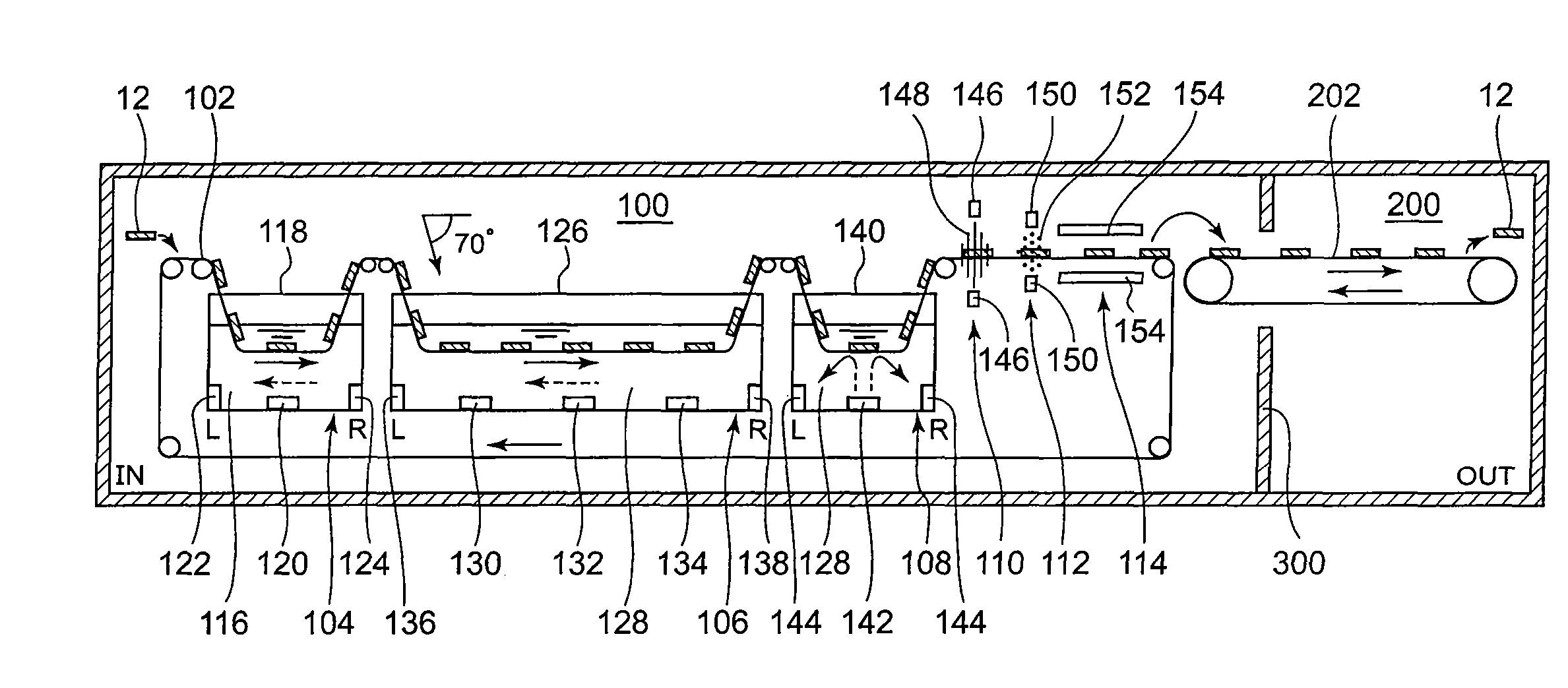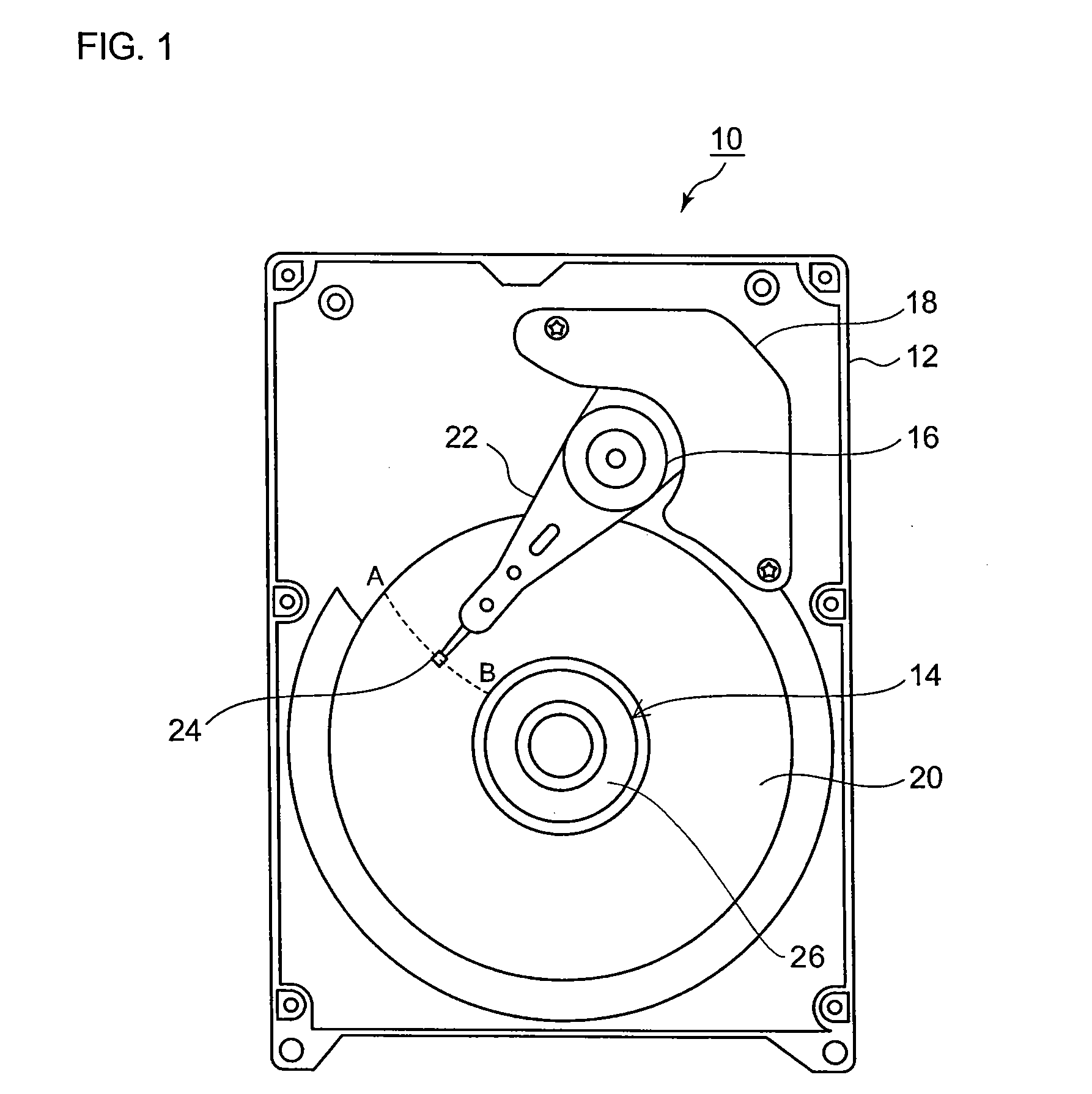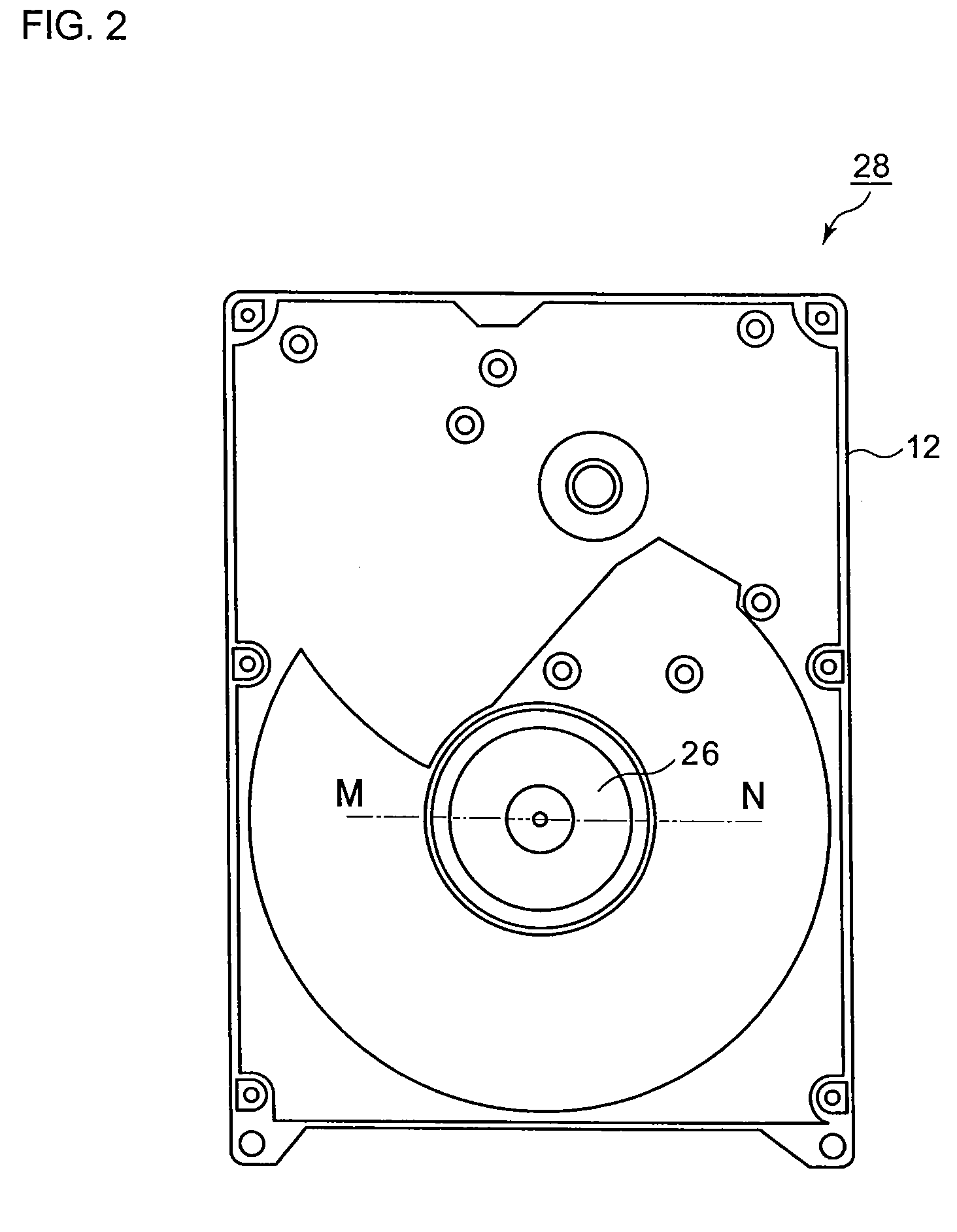Method of manufacturing a disk drive device for reducing adhesive amount of particles
a technology of adhesive and disk drive, which is applied in the direction of cleaning using liquids, instruments, record information storage, etc., can solve the problems of thermal asperity failure, head crash failure can become a serious problem, and the accuracy of reading the reproduced signal to be deteriorated, so as to achieve enhanced cleanness and reduce the probability of occurrence of ta failure.
- Summary
- Abstract
- Description
- Claims
- Application Information
AI Technical Summary
Benefits of technology
Problems solved by technology
Method used
Image
Examples
Embodiment Construction
[0025]The invention will now be described by reference to the preferred embodiments. This does not intend to limit the scope of the present invention, but to exemplify the invention.
[0026]Hereafter, preferred embodiments of the present invention will be described based on the accompanying drawings. FIG. 1 is a view illustrating the internal structure of a hard disk drive (HDD) 10, an example of a disk drive device assembled by using components manufactured by a manufacturing method according to the present embodiment (hereinafter, simply referred to as a “disk drive device 10”). It is noted that FIG. 1 illustrates a state where the cover of the device is removed to expose the internal structure.
[0027]A brushless motor 14, an arm bearing unit 16, a voice coil motor 18, etc., are mounted on the top surface of a base member 12. The brushless motor 14 supports, on the rotation axis thereof, a hub member 26 on which a recording disk 20 is mounted, allowing the recording disk 20 on which ...
PUM
| Property | Measurement | Unit |
|---|---|---|
| pH | aaaaa | aaaaa |
| flying height | aaaaa | aaaaa |
| size | aaaaa | aaaaa |
Abstract
Description
Claims
Application Information
 Login to View More
Login to View More - R&D
- Intellectual Property
- Life Sciences
- Materials
- Tech Scout
- Unparalleled Data Quality
- Higher Quality Content
- 60% Fewer Hallucinations
Browse by: Latest US Patents, China's latest patents, Technical Efficacy Thesaurus, Application Domain, Technology Topic, Popular Technical Reports.
© 2025 PatSnap. All rights reserved.Legal|Privacy policy|Modern Slavery Act Transparency Statement|Sitemap|About US| Contact US: help@patsnap.com



